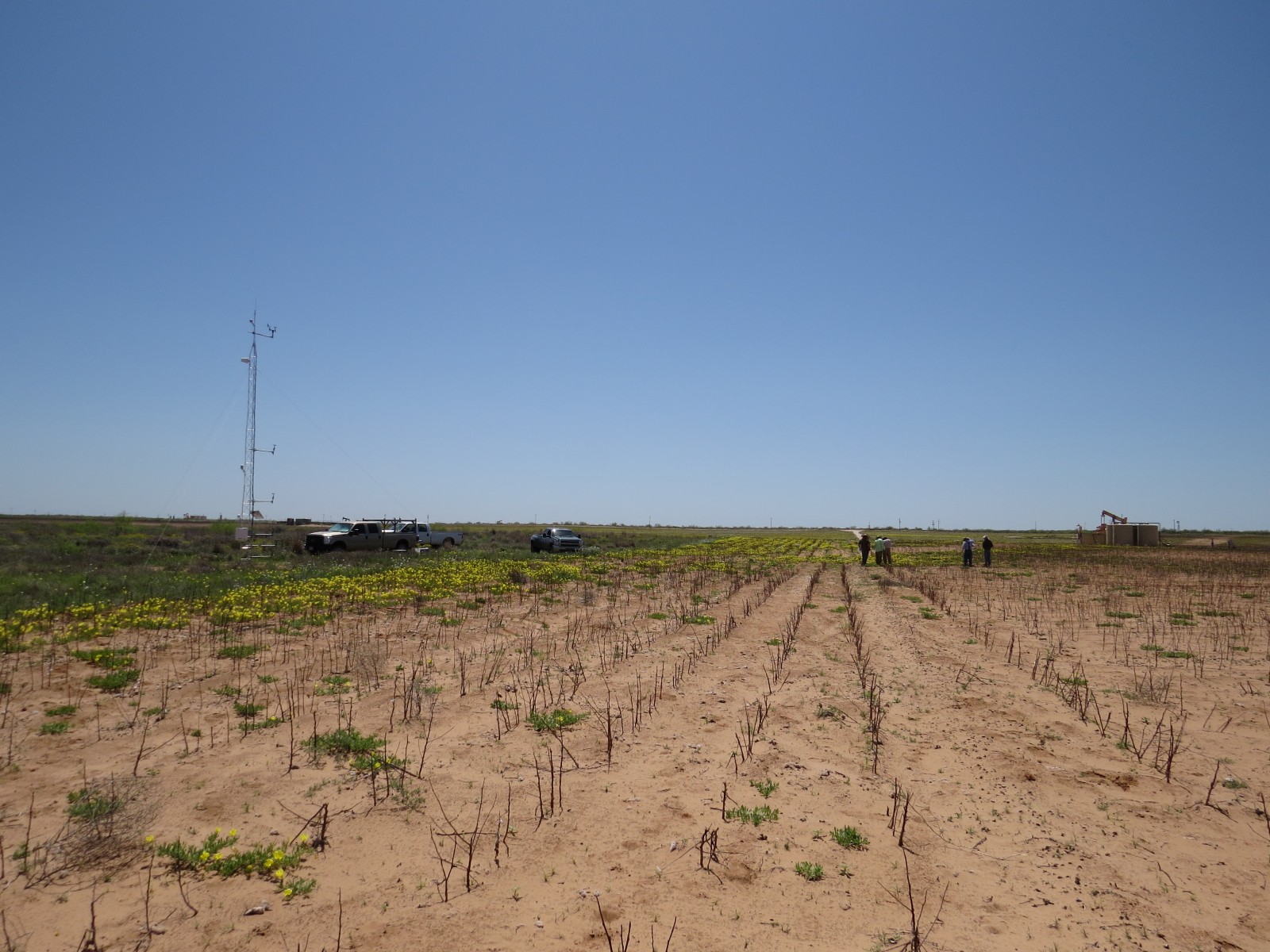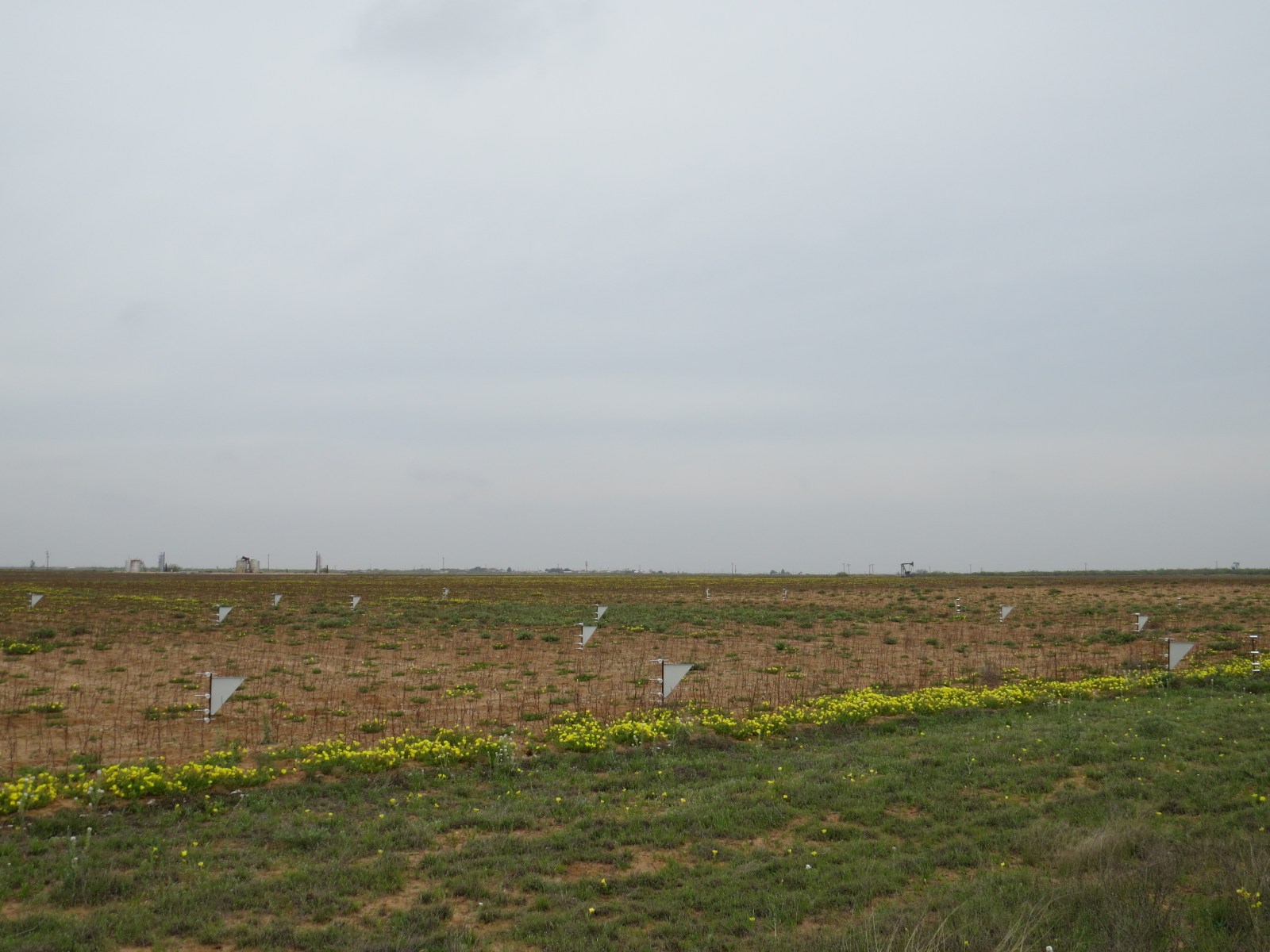
Status
Active
Location
The Big Spring National Wind Erosion Research Network site is located in central Howard County, Texas. The site lies in the Southern High Plains, to the northeast of the Chihuahuan Desert. This is an agricultural region characterized by loessal soils used approximately 50% for production agriculture, primarily cotton, and 50% for livestock production on native and improved rangeland. Much of this area is underlain by the southern fringes of the Ogallala Aquifer and some of the agricultural land is irrigated with center pivot or subsurface drip. The Network site is a production field bordered on the west by Conservation Reserve Program grassland. Site elevation is 765 m above sea level and the land slopes gently (<1 %) to a drainage running W-E South of the site.
Climate
The Big Spring Network site has a semi-arid warm continental climate. The average annual precipitation for the area is 475 mm, which is received in a bimodal pattern from late April to early June and from late August to early October. There is a very large inter-annual variability and the total annual precipitation ranges from less than 108 mm to greater than 816 mm. Average annual evaporation for the area is greater than 1800 mm and ranges from less than 1117 mm to greater than 2220 mm. Mean maximum temperature ranges from 13oC in January to 35oC in July and mean minimum temperatures range from -3oC in January to 21oC in July. High velocity winds associated with the passage of cold fronts occur from the north during the months of late November to February, and frequently from the southwest and west during the months of late February to late April. It is during these periods when the production fields are fallow that wind erosion occurs.
Vegetation and soil
The native vegetation of the study site was a short grass prairie, which has been cleared for the production of annual crops using incident precipitation. The primary crops grown in this region are cotton (Gossypium hirsutum L.) and various varieties of sorghum (Sorghum bicolor Moensch.), grown primarily for livestock fodder and hay production. The soil at the site is an Amarillo fine sandy loam (Fine-loamy, mixed, superactive, thermic Aridic Paleustalf).
Management
Annual crop production using conventional tillage.
Site Contact
Data
Click here to access the Campbell met data graphs.

 National Wind Erosion Research Network
National Wind Erosion Research Network